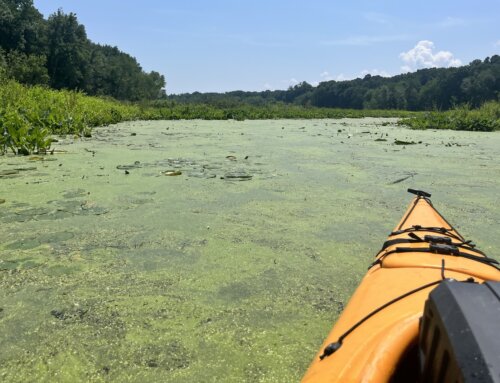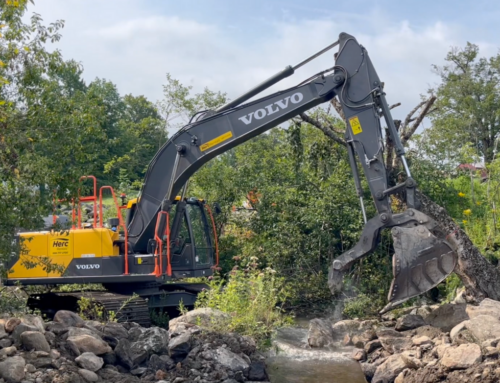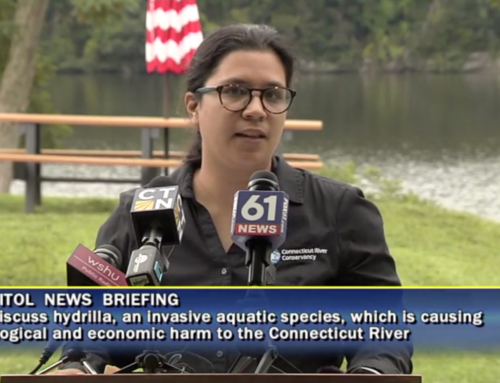Vermont. November 01, 2009.
Is there an environmental cost to paving, crop production, land clearing or animal grazing right up to the shoreline of a river, lake or wetland? So what if the natural vegetation growing on the land immediately adjacent to a water body is cut down? The answer: by removing the vegetation on that ribbon of land next to any water body we rob nature of the first line of defense in protecting human health and water quality. When the riparian zone is cleared we have lost an ounce of prevention and unfortunately we usually end up paying for an expensive pound of cure.
The riparian zone is the three-dimensional land area (width, length and depth) directly adjacent to a wetland, lake or river that interacts with both the water and land ecosystems. It serves ecological functions disproportionately large relative to its small land area. A healthy riparian zone slows the flow of overland runoff allowing it to be absorbed into the soil where plants take up nitrate and phosphorus pollution, soil microbes treat pathogens, the ground duff controls over land soil erosion and the plants provide food and shade for life in the water. These strips of land are especially important in reducing riverbank erosion during high water events.
When any activity destroys or diminishes the natural vegetative cover and compacts or covers the soil in this zone, nutrients and pathogens running over these surfaces during rain events flow directly into a water body. If the overland flow is not slowed down by the fallen leaves and other duff on the ground allowing the water to be absorbed into the soil there is little treatment of the pathogens and little removal of nutrients. Reduced treatment of the pathogens in runoff threatens human health. Reduced removal of nutrients creates the problems that lakes and impoundments large and small are having with toxic blue-green algae.
When those who use the land cut the width of the riparian zone the time between rain event and river flows rising is altered significantly and a river rises more quickly after the rain event. A healthy riparian zone allows for absorption of water into the soil and moderates the rush of water into the stream. Groundwater storage is enhanced by the absorption and the enhanced groundwater supply keeps river base flows stable during dry times. Collectively these factors have a major effect on water quality.
Trees and large shrubs provide a shade canopy over stream channels thereby maintaining water temperature stability during day long and seasonal extremes. If trees are removed shade is lost raising water temperature levels and that can mean lower levels of dissolved oxygen for all aquatic life. Migratory birds, reptiles, amphibians and small mammals are denied the food and shelter they seek in an undisturbed area along a waterbody.
Trees and other plants growing along the stream bank deposit dead leaves, branches or whole trees into the water. These materials offer woody debris litter for natural processing, provide flow diversity, create in-stream habitat for fish and macro invertebrates. Vegetation provides the stream with a critically important source of food in the form of organic carbon that is the food base and strongly influences the health of a biological community from bugs to fish.
Since riparian zones are so important to water and our health, what are Vermont and New Hampshire doing to protect riparian zones? New Hampshire has a law on the books called the Shoreland Protection Act that was passed in 1991 and has been amended several times since to extend the protections of the law to more rivers in more ways. Around most bodies of water in NH the law sets a statewide standard width of shoreland riparian zone of 50 feet with modifications depending on the land use.
In Vermont it is pretty much a Wild Wild West situation. Vermont does not have a statewide shoreland protection law so as long as you are disturbing less than one acre of land there are no protections for the riparian zone. Although agricultural, logging, Act 250 and power line regulations do address the issue of protecting riparian zones the unfortunate reality is that most shoreland activities in Vermont happen outside these protections.
How can you help protect our rivers? Be a good steward of your own land if it has a shoreline on a body of water. Protect any riparian zone from removal of vegetation, compaction or paving. Ask that Vermont take the all important step that NH has and protect the riparian zone by law. Let’s see if VT can be as smart as NH and bring into play the ounce of prevention offered by healthy riparian zones to protect water quality.
# # #
David Deen is River Steward for the Connecticut River Watershed Council. CRC has been an articulate voice for the Connecticut River for more than half a century.







